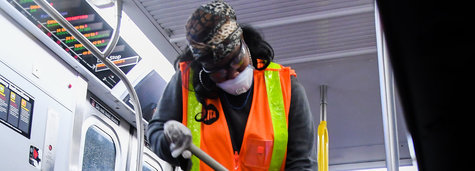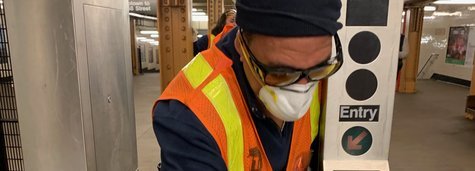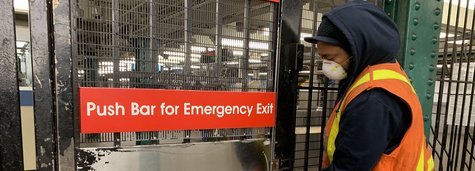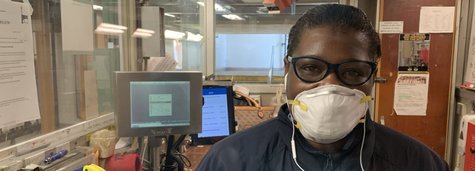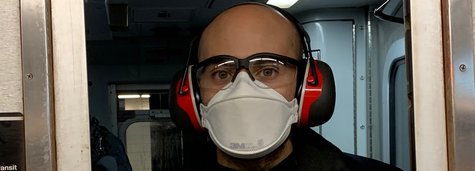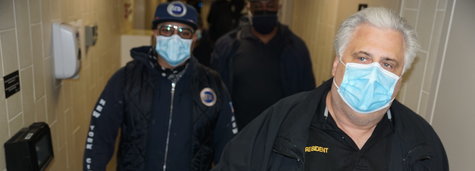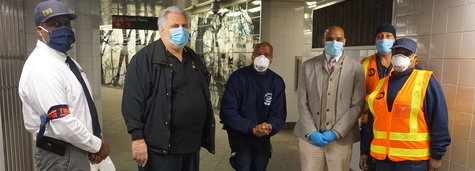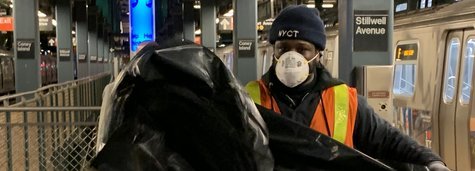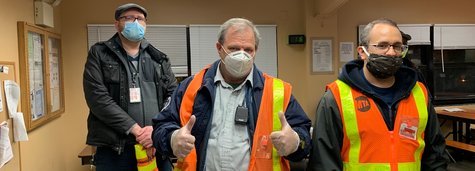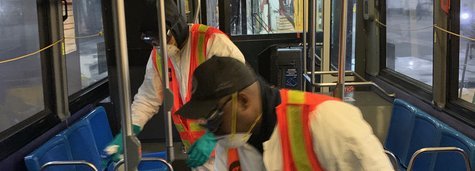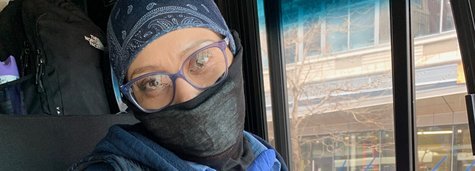Media Links
April 21, 2011
-
Source: Boston GlobeA Suffolk Superior Court judge has dismissed a lawsuit filed by MBTA labor unions that sought to prevent the transit agency from unilaterally switching them to the state employee insurance plan, a move that would strip the unions of some bargaining power but save the financially ailing agency nearly $30 million a year.
-
Source: NY TimesIn the largest unionization vote involving federal employees, the nation’s airport screeners voted in favor of unionizing, but federal officials said on Wednesday that there would be a runoff because neither union on the ballot received a majority of the votes cast.
-
Source:Democrat Wayne Wink, a ranking member on the legislature’s finance committee, said Nassau County Executive Ed Mangano isn’t playing fair.
April 20, 2011
-
Source:The updated system will be in place by next week and consists of just two warning levels: elevated and imminent.
-
Source:
New Jersey has spent more than $800,000 in legal fees fighting the federal government's $271 million bill for the scrapped Hudson River rail tunnel project.
-
Source:
As I was browsing through the upcoming MTA Board committee meeting books this evening, I came across a surprising number. After ejecting 2676 straphangers from the system in March of 2010, police officers removed just 668 folks for misbehaving. That’s a decrease of 75 percent, and at a time when arrests are up a few percentage points, this drop in ejections is surprising.
It is, in fact, so surprising that Erik Ortiz of amNew York wrote an entire article on the topic. Riders speaking to the free daily spoke anecdotally of the atmosphere underground. “It’s a problem late at night. Recently there was a man speaking loud getting close to people. You can tell he was inebriated and that makes you feel unsafe,” one rider said.
Of course, drunk, loud people seem to be the least of our worries. Homeless people inhabit subway cars, and panhandlers are supposed to be removed from the subway system. Ortiz tried to determine the cause of the decrease, but answers weren’t forthcoming. He reports:
While authorities would not speculate why there are fewer people being kicked out of the subways, the transit union yesterday said the loss of station agents is a “critical factor.”
“Passengers in stations without an agent really have nowhere to complain other than the emergency call (boxes) that most people don’t even realize is there,” said Jim Gannon, a spokesman for the Transit Workers Union 100.
The union said the MTA has about 480 fewer agents than a year ago. An MTA spokesman declined to speculate on the ejection numbers. The NYPD was unable to say why officers are booting fewer riders, even as they cuff more crooks. Transit arrests are up, and increased nearly 8 percent from 2009 to 2010.
Gannon’s point seems to be the union’s rote response, but it also doesn’t hold up to scrutiny. Even if a station agent placed a call to a police officer — a rare occurrence indeed — it would take more time to find the perp and remove him from the system than is worthwhile. Usually these ejections occur during cops’ routine rounds underground, and the presence of station agents shouldn’t cause a 75 percent year-to-year drop.
Furthermore, recent months suggest a pattern is emerging. As Ortiz reported, “In the first three months of 2011 compared to 2010, the number of riders being booted out of the subways dropped 66 percent, 7,794 to 2,631.” That seems fishy.
So what’s going on here? It seems to me as though the cops are scaling back their quality-of-life enforcement efforts underground. As the article notes, offenses for which one may be ejected include jumping a turnstile, panhandling, drinking or smoking, playing a radio audible to others (hah!) or carrying bulky items that interfere with subway operations. If cops are no longer patrolling for these offenses, ejections will decline.
Now someone just has to figure out why the cops aren’t on the case. After all, we’ve all seen instances undergound of ejectionable offenses, but rarely are people removed from the system. Instead, summons and arrest totals have increased, and the word “quota” somehow winds its way through my mind. After all, no one gets credit for an ejection when a ticket or arrest will do, and as NYPD staffing numbers are reduced, the quality-of-life violations undergound will likely increase.
©2011 Second Ave. Sagas. All Rights Reserved.
. -
Source:
In a two-part series earlier this month, Streetsblog examined the consequences of inaction on the $10 billion gap in the MTA’s current five-year capital program. The capital plan is fully funded only through the end of this year, but there’s been barely a word from the state politicians who must figure out how to pay for transit investment. Using projections from the NY State Comptroller’s office, Noah Kazis concludes that doing nothing could result in a $3 subway fare and $137 monthly MetroCard, or deferred maintenance that would take the system backwards.
Bad Choice No. 1: Skyrocketing FaresFirst, Kazis takes a look at a scenario where, faced with a lack of state funding, the MTA borrows the entire $10 billion needed to maintain and improve the system:
To pay for all that extra debt, the MTA would have to increase its yearly revenues the only way it can, by raising fares and tolls. According to Neysa Pranger of the Regional Plan Association, the MTA would need between $1 billion and $1.5 billion in new annual revenues to pay for $10 billion in bonds.
The 7.5 percent fare hike scheduled for 2013 — that’s on top of this year’s equivalently sized hike — is predicted to raise around $460 million a year, according to the comptroller’s report. Based on that number, it will take roughly a 24 percent fare hike to get $1 billion in new revenue and a 32.25 percent hike to reach $1.5 billion.
According to Kazis, that would mean “a base [subway and bus] fare between $2.80 and $3.00 and a monthly pass between $129 and $137.50 by 2014.” Applying the same fare hike to commuter rail, a $223 monthly LIRR pass between Hempstead and Penn Station would jump to at least $276 and as much as $294. A monthly Metro-North ticket between Grand Central and Tarrytown, currently $266, would cost $330-350.
Bad Choice No. 2: Plummeting System ConditionsJust another day in the '80s: According to this NY Times article from July 19, 1984, the train fire was the 17th of its type that year which required Fire Department assistance or evacuation of passengers.
What if the MTA instead defers maintenance and cancels improvements? Kazis sees buses that break down more often, subways that must slow down due to deteriorating tracks, and the cancellation of real-time arrival signs, security cameras, and expansion projects.
For a reminder of what the bad old days were like, read the introduction to the NYU Rudin Center’s 2005 report, “From Rescue to Renaissance” (emphasis added):
Only one-quarter of subway tracks were receiving mandated twice-weekly inspections. With insufficient track maintenance, the number of derailments soared in the early 1980s, to a rate of one every 18 days in 1981-82. After a succession of derailments in early 1983, red tags were placed at 400 locations with suspect track; these red tags instructed train operators to slow to a crawl.
For subway riders, the result was a system that performed unreliably and unsafely, if at all. At the height of the transit crisis in 1983, on-time performance dropped below 50%. Hundreds of trains never made it to their destination – in 1981, 325 train runs were abandoned on a typical day. Cars caught fire 2,500 times every year…
The commuter lines were also in dire condition. Metro-North approached “total collapse,” according to the US Railway Association, due to “virtually nonexistent maintenance.” Poorly maintained fleets at both Metro-North and the Long Island Rail Road meant that cars broke down frequently and had to be kept out of service. Onboard, faulty air-conditioning systems resulted in conductors being issued wedges as standard equipment to prop open car doors for ventilation.
Skyrocketing fares, plummeting system conditions, or a responsible funding solution that keeps people and the region’s economy moving? It’s Albany’s choice.
Image: Scanned NY Times article via Proquest.
-
Source:Workers at the Boathouse restaurant in Central Park accuse the restaurant's owners of mistreating them.
-
Source:
Derailment delays Chicago elevated trains
Albany Times Union
CHICAGO (AP) — The Chicago Transit Authority says no wheels ever left the tracks in an incident that delayed trains on three elevated lines. No injuries have been reported. The Tuesday morning incident was first reported as a minor derailment. ...
and more » -
Source: NYT > Steven GreenhouseThe A.F.L.-C.I.O. has put up a Web site highlighting a resurgence in compensation at the top, hoping to press corporate boards to share the wealth with its members.
April 19, 2011
-
Source: Staten Island AdvanceUnder the advisement of the Amalgamated Transit Union, a group of Staten Island politicians has successfully lobbied the New York City Transit Authority to propose extending and altering the X22 express bus service stretching between Tottenville and Midtown Manhattan.
-
Source: City Room / NY TimesOff the Rails: The Metropolitan Transportation Authority, in its never-ending quest to get riders to clean up after themselves, unveils a new decal.
-
Source: Long Island Business NewsA new collaboration of officials from southern New York and Connecticut has received a $3.5 million grant from the U.S. Department of Housing and Urban Development to create livable, sustainable communities and growth centers around the region’s transit network.
-
Source: InfrastructuristEarly last week we told you that the new Congressional budget deal cut high-speed rail funding in 2011 down to just $1 billion from its initial level of $2.5 billion. Correction: the budget deal did not cut high-speed rail funding for 2011. It eliminated it. And then some. A document providing the latest details on the budget agreement, released by the House Appropriations Committee, makes that perfectly clear
-
Source: StreetsblogConstruction on a slate of pedestrian and bike improvements for Grand Army Plaza is scheduled to move forward this summer, NYC DOT announced this Saturday. The redesign includes a major expansion of the pedestrian islands at the north side of GAP and the addition of a two-way, protected bicycle connection linking Union Street to Eastern Parkway on the southern side. It does not include the two-way, protected bike lane on Plaza Street shown in DOT’s 2010 presentation on this same project, which Community Boards 6 and 8 both approved last year.
-
Source: StreetsblogThis week, the city will release its update of PlaNYC. Will it finally include what is perhaps the biggest missing piece of its sustainable transportation plan?
-
Source: NY1Two men are facing charges in connection with a botched Brooklyn robbery that ended in gunfire and left an Metropolitan Transportation Authority police officer in the hospital.
-
Source: Mobilizing the Region / Tri-State Transportation CampaignThe dormant parcel of West Side land known as the Hudson Yards is finally seeing some activity. As reported by the Wall Street Journal, the site’s developer, Related Cos., has begun clearing the land in preparation for future construction. It’s been nearly a year since Related Cos. and the MTA signed a deal to develop the site with residential and commercial space, and little appeared to be happening in the Yard though big changes were happening all around it.
-
Source: DNAinfo.comThe MTA will restore weekend service on the M50, a popular crosstown bus line, reversing a controversial decision made last year, the agency announced Monday.
-
Source: Transportation NationThe study in the Journal of Economics and Economic Education Research finds that a 10 percent increase in gas price, decreases the demand for SUVs by 13.7 percent and increases the demand for Hybrid cars by 9.1 percent. The price of a gallon of unleaded has increased more than 30 percent in the past year, according to AAA.


